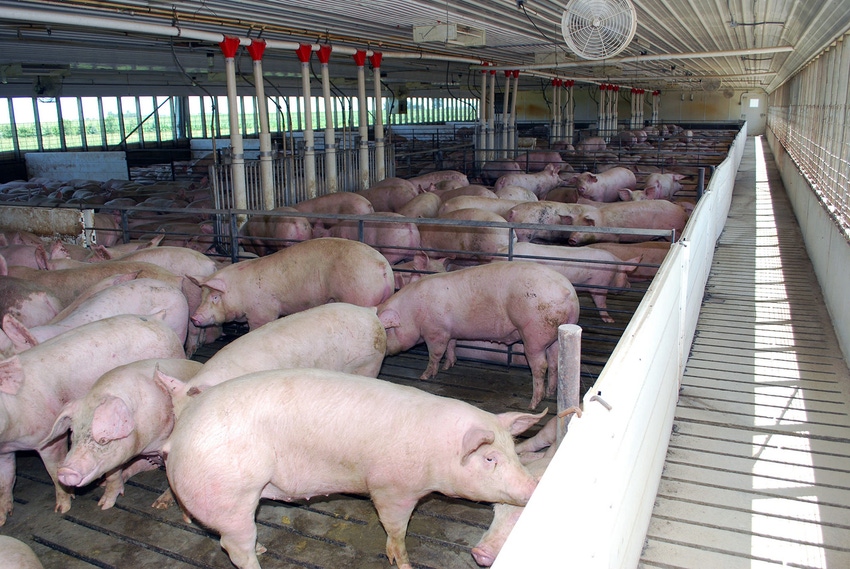Hog prices are riding a roller-coaster
Experiencing a market that is posting record high prices in the face of record large production is so rare that in my 30-plus years as a commodity broker I can say I’ve never witnessed anything like it. Let the roller-coaster roll!
July 24, 2017

The roller-coaster I’m referring to is the belly market. Belly prices are slowing climbing to the top, eventually reaching that inflection point and then lookout as prices will take a swift and hard tumble as if on a roller-coaster ride.
When will the top or inflection point in belly prices be reached? The concern is not only what price will prove to be the top price, but when will this occur? If this occurs after the expiration of the August lean hog contract, fireworks could be in store on this roller-coaster ride, especially for the August lean hog contract.
It’s been said there’s no shortage of bellies. Really? Pork production this year is record large. Record large production this year is on the backside of record large production last year. Fourth quarter production in 2016 was record large yet in January we learned that frozen belly stocks had been drawn down during the fourth quarter for the first time ever. First Time Ever!
Since then belly stocks have continued to be pulled down, although slowly. Belly prices, just recently, edged upward and into new all-time high prices. Belly prices have never been this high before! In light of this, at least until production begins increasing this fall, I think it is fair to say there’s a shortage of bellies. For months demand has outstripped production. When this forces prices to levels never seen before, you have a shortage.
More importantly, what can/should a trader do in the event that bellies remain strong through the expiration of the August lean hog contract? Keep in mind bellies currently make up about 30% of the pork carcass. This is double of what they normally represent. So the rest of the pork carcass — hams, butts and loins — are important to monitor, of course. However, if bellies remain strong for the next three weeks, the odds favor that the hog carcass will not crater, likely causing cash bids to hold relatively firm. Firm cash from here will most likely drive August hog futures higher, possibly testing their contract highs into expiration. Expiration is Aug. 14, or three full weeks from the date of this publication. The current CME lean hog index (current cash market) stands at $91.67. August futures are sharply discount, posting a recent settlement at $81.10. Futures are currently anticipating a break in the cash most likely engineered by a break in the cutout over the next three weeks.
Referring back to the bellies, what if they don’t top out? What if the cutout holds relatively stable? Most likely August futures will be forced upward.
The beautiful thing about the hog market and options on hog futures is that making a play on the market is relatively inexpensive and the risk is totally defined. This is because of the short time frame involved and favorable basis. We are actively purchasing the August 84, 85 and 86 call strike prices with the intent of taking most of these positions into expiration on Aug. 14.
Jumping back to the belly market, the USDA will release a monthly cold storage report on July 24, the same day this column was released. The odds favor the report will be supportive in that belly frozen stocks were likely depleted further during June.
Other demand trends in the U.S. pork industry remain favorable. May marked the 13th consecutive month that pork exports were year-over-year higher. April exports were up 8% and May exports were up 12%. These are impressive trends. Recent weekly export data has suggested a slight slowdown in export business, but a declining dollar should help keep prices competitive. The U.S. economy is pumping along at near full employment. In addition, cheap gasoline prices continue to work as a windfall stimulus that is impressively regressive in nature. In other words, cheap retail gas prices is of great benefit to a vast majority of the U.S. middle and lower class. It’s my opinion this translates to increased meat consumption, including pork.
In addition, while the Hogs and Pigs Report showed expansion — cautious expansion — the information did not spook the discounted futures market. There are likely two reasons for this. First, packer processing margins are highly profitable and, second, increased slaughter capacity will soon be available to the marketplace. In a nutshell, with margins profitable and increased slaughter capacity, there’s room in the cash market for advancement without turning packer margins red.
Finally, the July cold storage report will likely ignite a fire under belly prices as evidence is overwhelming that inelastic demand continues to gobble up fresh production and nibbling away at what frozen stocks remain. Many traders think they know what will happen and when. I say how? We’ve never experienced this type of demand for bellies, ever. We’ve never witnessed a drawdown in frozen stocks during the fourth quarter as we did in 2016. Experiencing a market that is posting record high prices in the face of record large production is so rare that in my 30-plus years as a commodity broker I can say I’ve never witnessed anything like it. Let the roller-coaster roll!
Dennis Smith has been a commodity broker/livestock analyst for more than 30 years. He publishes a daily comment prepared for clients called the evening livestock wire. Free 30-day trials are available by emailing Dennis.
About the Author(s)
You May Also Like





